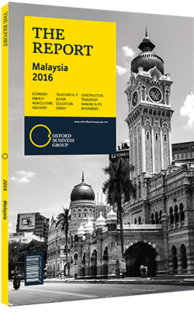Shahril Ridza Ridzuan, CEO, Employees Provident Fund (EPF): Interview

Interview: Shahril Ridza Ridzuan
How concerned are you about Malaysia’s financing gap? To what extent has Malaysia offered solutions to alleviate this problem?
SHAHRIL RIDZA RIDZUAN: If you look at Malaysia’s financing gaps, they’ve been well covered over the last few years. This is largely because of domestic institutions, and not simply those like EPF, but also insurance companies and banks that are all flush with liquidity. So there’s never been a problem in terms of funding the Malaysian government’s requirements when it comes to ringgit. The good news is that because of the strength of the ringgit, the Malaysian government doesn’t need to tap global markets. If you look at government’s actual debt position, the portion that is denominated in foreign currency is a fraction of their overall liabilities. In that sense, there is no real immediate danger in terms of being unable to fulfil foreign debt obligations. That is not to say there aren’t issues, and the government is still in a position where it is perhaps spending more than it should, which is why it needs to reduce the deficit.
The government of Malaysia has made some progress in the area of foreign debt, but we would love to see them make more, as it’s probably the one thing that’s holding back the private sector. The government comfortably outspends private industry, but work continues within government to reduce barriers for business and to reduce its own role. The 11th Malaysia Plan is a step in the right direction, but the main issue for the government is execution. In previous plans many objectives have been planned out, but the implementation rate has hovered at 60-70%. So if this can be increased, it will be fantastic. But on the fiscal side, the government has taken some very positive steps, such as introducing the goods and services tax and removing petrol subsidies. Changes were made early into the election cycle. Therefore, it should soon be evident just how positive these changes have been to the general population.
What steps is the EPF taking to diversify its portfolio and to develop its geographical exposure?
RIDZUAN: Right now, we’re already in around 30 different markets. Between 2009 and 2012, we emphasised asset acquisition in the UK, but over the last couple of years, we’ve slowed down, given how that market has been developing. Recently, however, there’s been a lot of money going in, so we have actually been a lot more active in continental Europe. For instance, EPF has done a lot in Germany over the last two years. Closer to home, we are now investing substantially in Japan, so for us it has been a case of trying to find value. The good thing is that we don’t operate to a benchmark; what’s crucial for us, is simply finding a good absolute return. Volatility is something that we don’t actually mind, as it allows us to find markets which are under-appreciated. We add these types of markets all the time, just recently adding Vietnam in 2015. As markets mature, develop and cross that threshold where it’s feasible for a pension fund such as ourselves to invest in that market, we do so. Over the next 20 years, we expect to add markets from South America and some of the more developed African markets. We expect this to be a natural process.
How will the planned sharia-compliant pension fund boost Malaysia’s Islamic finance sector?
RIDZUAN: We aim to have a fully sharia-compliant retirement savings fund, parallel to current mixed and conventional funds, by January 2017. In terms of market development, it will provide a boost on the sharia side, as retirement funds tend to provide liquidity and long-term support to the market as a whole. This will likely encourage the development of more products in the market. It also makes long-term assets ( long-term bonds, infrastructure assets) more viable for the sharia space. At the short end of the market, one finds many sharia-compliant mutual funds and real estate trusts, which tend to be fairly short-term.
You have reached the limit of premium articles you can view for free.
Choose from the options below to purchase print or digital editions of our Reports. You can also purchase a website subscription giving you unlimited access to all of our Reports online for 12 months.
If you have already purchased this Report or have a website subscription, please login to continue.

